The SR comes from the factory with no chain guard. Why?
You might think: Design Engineer = Scottish = Cheap = No chain guard. Good guess, but no.
I have over 50 years’ experience with chain driven vehicles, karts and cars. Almost all had chain guards. Yet, I made a difference choice with the Rush. I will try and give you some of my reasoning here so that you can make your own decisions inclusive of that knowledge. At the end of the day, it’s a personal preference and since we have now seen 4 different customer designs, it is obviously one that several prefer.
Chains are part of our life with a Bike Engine Car (BEC). Nobody loves them, if you do, you’re likely a member of an alternate community page. However, they are really a tremendous device. They are relatively simple, low cost and one of the most efficient power transmission devices available.
The trade off is they need maintenance, inspection and replacement to be reliable. Lack of this will result in failure.
Chain failure is something you want to avoid at all costs. It will likely happen when on track under heavy load. That could have severe consequences: you now have a heavy chain coming loose in the engine bay at very high speeds, which can cause mechanical damage to other components in the engine bay, including the most expensive part of the car: the engine itself.
Maintenance
We are moving toward recommending a 20hr replacement interval on chains. We have had some go over 80 hours and others we have seen fail at 4! The 4-hour chain was due, however, to a damaged rear sprocket.
If you see the conditions mentioned above - a tight link, discoloration of a link barrel due to heat, a tight spot in the chain or a damaged sprocket - fix that before running the car.
At +/- $250 in repairs it’s a no-brainer in comparison to the cost of damage a chain break could cost!
Now, Chain Guards
Firstly, we have seen 4 different designs. They are all chain “OIL” guards, they will stop oil fling not a chain.
Pros
I think everyone reading this will take away that chain maintenance is paramount. The decision to have a chain guard, how it impacts the necessary maintenance and inspection, will depend on the design and the individual car owner. I still believe that for many of our owners it would make chain maintenance and inspection harder. Cleaning the car, including chain oil fling, is just part of owning a race car. If you want a guard, please go ahead. It is purely a personal preference, several of our customers offer to sell them. However, The SR will continue to ship from the factory without a chain guard.
Chain Oilers
I love them. However, they are NOT a substitute for other maintenance and inspection requirements.
You might think: Design Engineer = Scottish = Cheap = No chain guard. Good guess, but no.
I have over 50 years’ experience with chain driven vehicles, karts and cars. Almost all had chain guards. Yet, I made a difference choice with the Rush. I will try and give you some of my reasoning here so that you can make your own decisions inclusive of that knowledge. At the end of the day, it’s a personal preference and since we have now seen 4 different customer designs, it is obviously one that several prefer.
Chains are part of our life with a Bike Engine Car (BEC). Nobody loves them, if you do, you’re likely a member of an alternate community page. However, they are really a tremendous device. They are relatively simple, low cost and one of the most efficient power transmission devices available.
The trade off is they need maintenance, inspection and replacement to be reliable. Lack of this will result in failure.
Chain failure is something you want to avoid at all costs. It will likely happen when on track under heavy load. That could have severe consequences: you now have a heavy chain coming loose in the engine bay at very high speeds, which can cause mechanical damage to other components in the engine bay, including the most expensive part of the car: the engine itself.
Maintenance
- The chain needs to be lubricated. We recommend a high-performance chain wax as it will cause less fling than oil. The chain should be lubricated once per hour at minimum. Failure to lubricate the chain will result in accelerated chain wear.
- The chain should be cleaned with a non-solvent chain cleaner every 4 hours at minimum, More if you are in a dirty environment, say a gravel paddock. Clean your sprockets too!
- The chain needs to be adjusted correctly. The chain should be adjusted to have one half to one inch vertical play at the midpoint between sprockets. This should be checked through the whole rotation of the rear sprocket and chain. A tight spot is a sign of a problem and should NOT be ignored.
- A new chain will stretch, it will need to be adjusted a couple of times before it sets.
- This should be a deliberate step and should be part of the chain lube process! The chain should be inspected visually for any links that are going tight or for discoloration of a link barrel due to heat. The chain is a sealed chain meaning that grease is sealed in at the factory. If the seals are damaged that grease will escape and that link will seize and fail. If you see this, replace the chain early.
- The sprockets should be inspected for damage. This is best done by feel. At least it is when you’re 60 and half blind! Touch each tooth between your thumb and forefinger, if there is any damage you will feel it. Please don’t turn the wheels while doing this, lest you will need maintenance! This step is important, all it takes is a stone from the track to get thrown into the chain and it can cause damage to a sprocket. A damaged sprocket will break a chain.
We are moving toward recommending a 20hr replacement interval on chains. We have had some go over 80 hours and others we have seen fail at 4! The 4-hour chain was due, however, to a damaged rear sprocket.
If you see the conditions mentioned above - a tight link, discoloration of a link barrel due to heat, a tight spot in the chain or a damaged sprocket - fix that before running the car.
At +/- $250 in repairs it’s a no-brainer in comparison to the cost of damage a chain break could cost!
Now, Chain Guards
Firstly, we have seen 4 different designs. They are all chain “OIL” guards, they will stop oil fling not a chain.
Pros
- Will help stop oil / wax fling and keep the engine bay cleaner.
- Will help stop oil / wax fling onto radiator which will increase radiator life.
- Small chance that it might offer some mechanical protection.
- Most that I have seen, make inspection of the chain almost impossible without removing it. Most of our customers won’t do that, which would lead to more chain failures.
- It keeps oil / wax fling contained close to the chain, including any grit / stones that may be thrown. There is a small chance that this can fall back onto the chain.
- Small chance that it may actually increase the chance of other mechanical damage by redirecting the chain toward the engine during a failure.
I think everyone reading this will take away that chain maintenance is paramount. The decision to have a chain guard, how it impacts the necessary maintenance and inspection, will depend on the design and the individual car owner. I still believe that for many of our owners it would make chain maintenance and inspection harder. Cleaning the car, including chain oil fling, is just part of owning a race car. If you want a guard, please go ahead. It is purely a personal preference, several of our customers offer to sell them. However, The SR will continue to ship from the factory without a chain guard.
Chain Oilers
I love them. However, they are NOT a substitute for other maintenance and inspection requirements.

